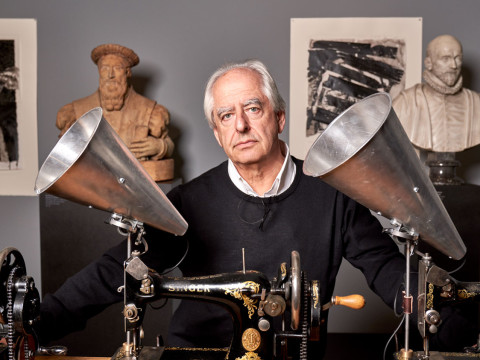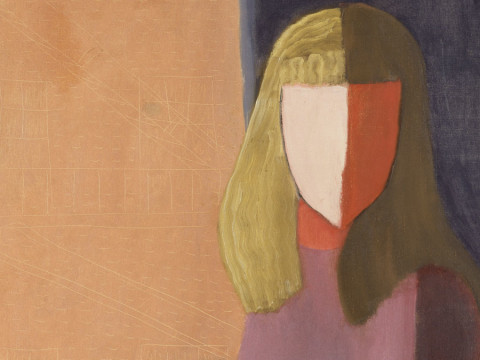
Jean-Etienne Liotard: a beginner’s guide
By Tom Jeffreys
Published on 18 October 2015
Who was Jean-Etienne Liotard? We introduce one of the most idiosyncratic figures of the 18th century, a master portrait-painter whose works are characterised by their warts-and-all realism and technical virtuosity.
In autumn 2015 the RA celebrates the work of Jean-Etienne Liotard. An eccentric pastel virtuoso who painted the leading figures of his day, he is comparatively little known here in the UK. For those new to his work, here are five key facts to introduce you to Liotard’s exotic world of characters and culture.
Liotard was a master of pastel
Jean-Etienne Liotard was a master of pastel. Where traditionally the medium had been employed loosely and lightly, Liotard took a different approach: his portraits are carefully crafted, highly polished, and painstaking in their attention to detail. During his lifetime, certain members of the art establishment (including Royal Academy founder Joshua Reynolds) took a disdainful attitude towards Liotard’s decision to prioritise pastel over oil paint. But curator MaryAnne Stevens expects visitors to be “bowled over” by the exquisite beauty of the paintings on show.

Julie de Thellusson-Ployard, 1760

Issac-Louis de Thellusson, 1760
He was committed to realism
Liotard’s work is characterised by an astonishing attention to detail. This can be linked to the intellectual developments of the eighteenth century, such as the rise of science and empirical philosophy which privileged direct observation of nature. Liotard, who trained as a miniaturist, excelled at depicting the textures of fur and other finery. More controversially, Liotard did not idealise his sitters: rather, he portrayed them as he saw them. This ‘warts and all’ approach was acceptable because the majority of his portraits were not commissioned to be exhibited in public. They would hang in private apartments or picture closets. As a consequence many are still in private collections, and this one of the reasons why Liotard is not as well known in the UK as he ought to be. Many of the works on show at the RA have never been seen in public before.
Liotard travelled widely
Not only did pastel enable Liotard to paint the world, it enabled him to travel it. As Christopher Baker points out in RA Magazine, pastels “could be easily transported in a small box and were applied relatively quickly”. They were therefore ideally suited to an artist who was compelled to travel widely in search of patronage and commissions. Liotard was born in Geneva in 1702, studied in Paris, and then travelled to Naples. He spent much of his life on the move, and the exhibition covers his time in Rome, Amsterdam, Constantinople, Geneva, Paris, Vienna, and London, where he settled for two years in the 1750s and later exhibited at the Royal Academy in 1773 and ’74.

Self-portrait Laughing, c. 1770

Woman on a Sofa Reading, 1748-52
He painted the most prominent figures of his age
Something of a self-publicist, Liotard took to sporting a long beard and Oriental robes and became known throughout Europe as “the Turk”. His brilliance as a portraitist, combined with his peripatetic lifestyle and distinctive appearance, enabled Liotard to meet – and paint – some of the most prominent figures of his era: from Venetian counts to Austrian royalty, Marie Antoinette, George III, and Bonnie Prince Charlie. Liotard also painted celebrated cultural figures such as philosopher Jean-Jacques Rousseau and actor David Garrick.

He didn't just do pastel portraits
Liotard may be most celebrated for his portraits in pastel, but he was an artist of great versatility. He produced numerous drawings as well as enamels, copperplate engravings and paintings on glass. He also wrote a Treatise on the Art of Painting, and formed his own impressive collection of old master paintings. For curator MaryAnne Stevens, one of the exhibition’s highlights is a group of drawings in red and black chalk that depict scenes of contemporary Turkish life which she describes as “wonderful”: “These works were important not just as records but in how they fed the West’s increasing taste for the exotic.”
The travels of Jean-Etienne Liotard
Explore the points on the map for dates and stories of Liotard's journeys.
Jean-Etienne Liotard is in The Sackler Wing at the RA from 24 October 2015 – 31 January 2016.
Tom Jeffreys (@tomjeffreys) is a writer, editor and curator.
Related articles

A beginner's guide to William Kentridge
19 July 2022

A beginner's guide to Milton Avery
12 July 2022

The truth in Francis Bacon's work
19 November 2021

Nature and myth in art
30 August 2021

How to paint 'en plein air' like Hockney and Constable
24 August 2021

In 60 seconds: Waterhouse's ‘A Mermaid’
2 February 2021